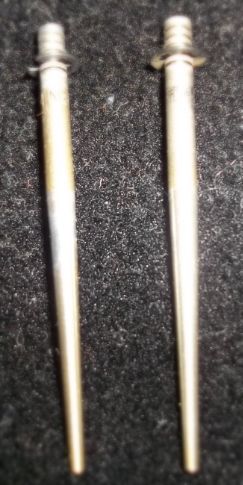TC is correct, the needles do rub the needle jet and eventually "oval" the jet and wear the needle. Straight pull carbs didn't have this problem as much as the cv due to the fact that the cv piston and needle "pulse" up and down with every intake cycle, the straight pull needles moved only with the throttle twist, so a fraction of the friction and overall movement. I've personally replaced needles and needle jets here at the shop after troubleshooting a rich condition that couldn't be put at bay with all other adjustable means. New needle and needle jet, perfect color brought back to the plugs :



 . Just the early 'basterdized' 80 carbs had the cross-over casting that gets plugged off
. Just the early 'basterdized' 80 carbs had the cross-over casting that gets plugged off .
.
 )
)
Comment